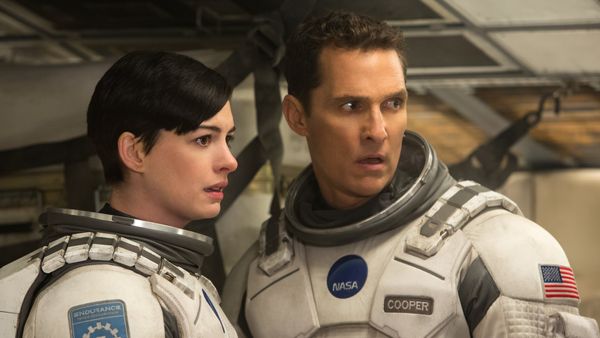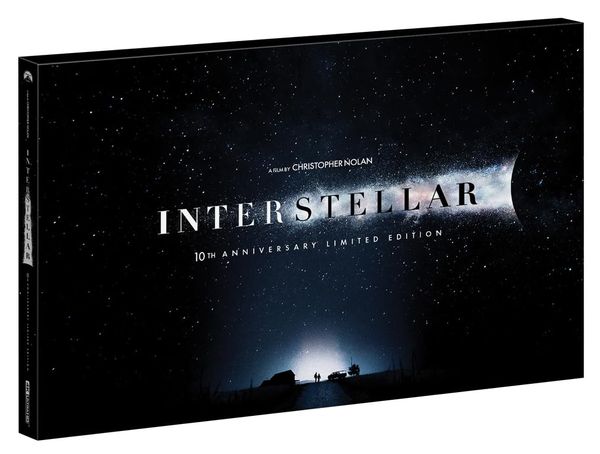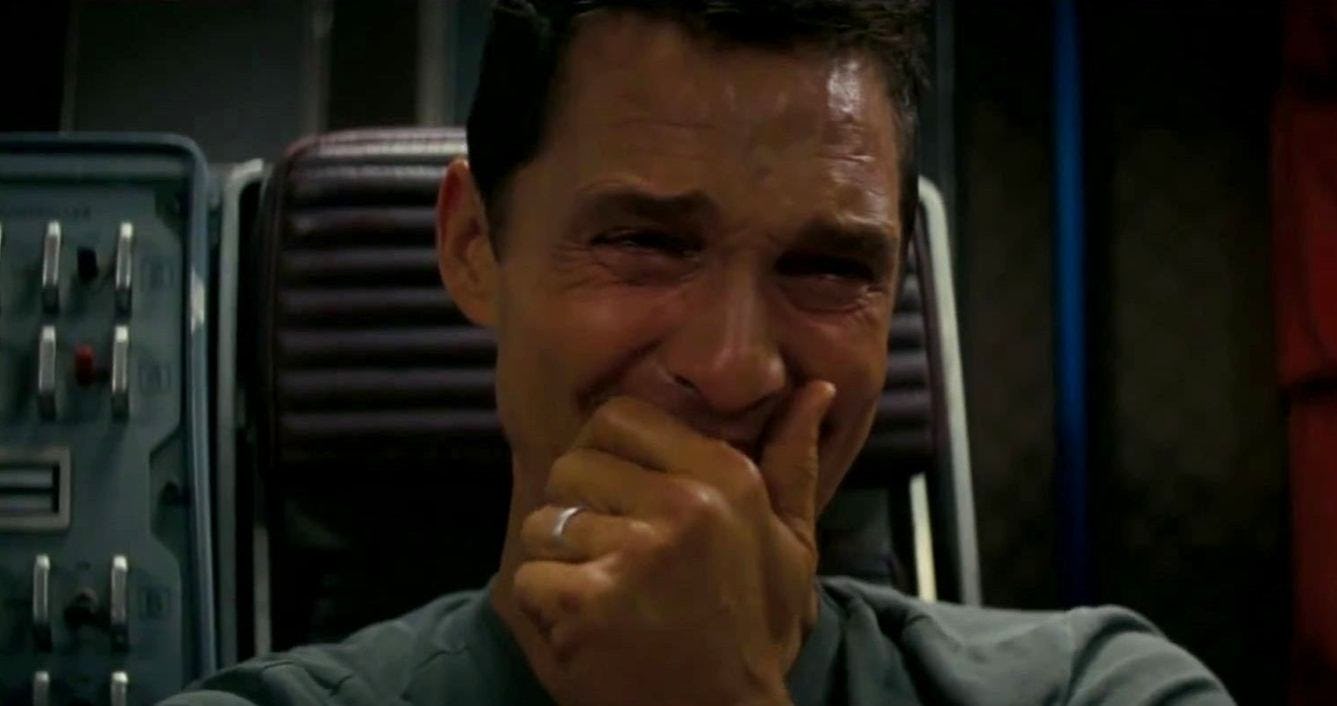
No movie has been ruined by a meme quite the way Interstellar was ruined by the Matthew McConaughey crying meme. Just one year after the release of Interstellar, the visage of McConaughey staring at a screen while utterly losing his sh*t was suddenly standing in for all kinds of trivial things that had nothing to do with the context of the scene within the film. Memes are fun, but memes are also contextless monsters, destroying nuance, writing, and actual meaning relentlessly. And if there’s one kind of movie that simultaneously is utterly memeable and also should not be memed, it’s a big Christopher Nolan movie like Interstellar.
To put it a slightly different way, on the 10th anniversary of Interstellar, the problem with discussing why this film is good requires the usual summaries of what exists in the movie that is remarkable, which, strangely, with this film, becomes reductive quickly. With relative ease, we can rattle several “firsts” about Interstellar that make it sound culturally relevant — it was one of Timothée Chalamet’s first films (in a minor role), it was the first movie Nolan made after the conclusion of The Dark Knight Trilogy, and it was the first major sci-fi film to depict black holes with very-close scientific accuracy. But none of these firsts are why Interstellar remains a brilliant and strangely underrated science fiction masterpiece. Because this film is one of the rare cases where it’s not only greater than the sum of its parts, but those individual parts are occasionally, paradoxically, greater than the whole.
Here’s the thing with Interstellar that seems to get missed. This premise, on paper, in the hands of various other filmmakers would have resulted in a borderline horrible movie. Here’s why: For all of its apparent freshness, Interstellar is riddled with contradictory clichés. There are so many, in fact, that it’s hard to excuse any of them when you start cataloging each one. First, the film relies on the twin dilemmas that in a future in which climate change has caused massive social upheaval not only would green, clean energy become a necessity, but also that mainstream institutions would become science deniers. Right from the start, we learn that former astronaut Cooper (Matthew McConaughey) has become a farmer and that his young daughter Murphy (Mackenzie Foy, and later, Jessica Chastain) is taught by the local schools that human space travel was a hoax. In this twisted dystopia, the biggest concern that Big Brother seems to have is to make sure that people don’t leave Earth or even think about space travel, for reasons that only exist to make the movie work. The opposition to everything that the characters believe in is present from the very beginning and cranked up to eleven.
When NASA is depicted as an underground, secret organization, Interstellar delivers its first brilliant masterstroke. This hyperbolic gambit puts the idea of space travel — much less colonizing other worlds — so behind the eight ball that you can’t help but root for Coop, Professor Brand (Michael Caine), Professor Romilly (David Gyasi), and Amelia Brand (Anne Hathaway) at every twist and turn. By the time our heroes are actually out in space, trying to find suitable worlds for humanity to live on, there’s a sense of desperation and a ticking clock the entire time, which is another nifty trick, since the film itself unfolds over the course of a few generations of humans, and as such, requires us to think hard about the nature of urgency.
Relativity’s strange effect on this kind of space travel is treated not just with fairly decent scientific accuracy, but also reveals that the entire movie is a kind of predestination paradox ouroboros. If it’s been a while since you’ve seen the film — or you’ve never seen it — I’ll not spoil these specifics here because that would just be mean. However, what’s funny about the closed-loop nature of Interstellar’s biggest character arc is that this notion is oddly the quickest thing you forget when reflecting on the movie.
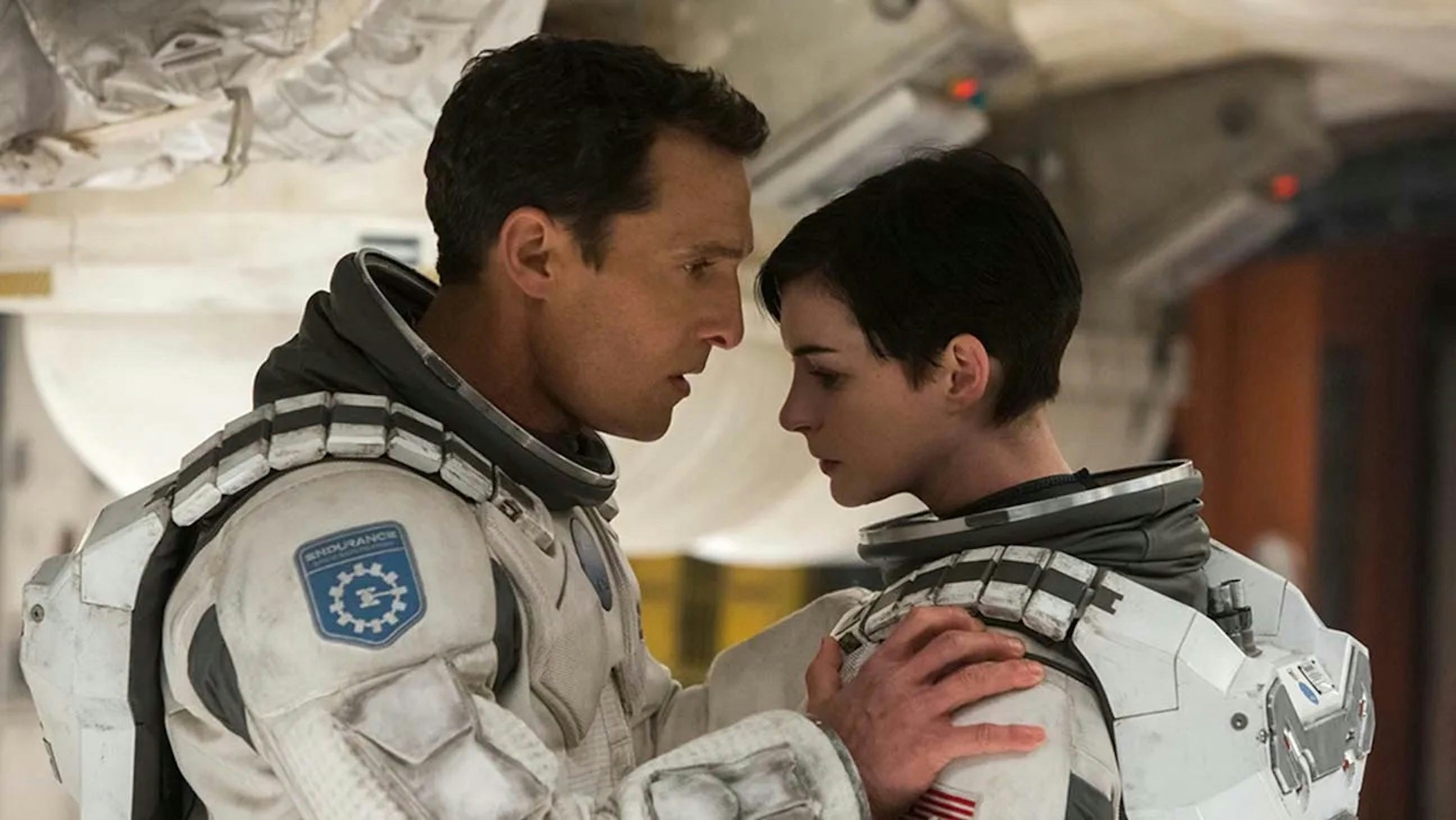
To put it another way, while it's arguable that both Christopher Nolan and Jonathan Nolan (who wrote the screenplay) love big, high-concept twists in their sci-fi stories, the biggest timey-wimey twist in Interstellar thankfully doesn’t define the movie.
Interstellar’s competing ideas and large cast of characters could make it feel like an overstuffed movie, but again, that’s only something you notice after the fact. On one level, the movie comments brilliantly on the need for advanced AI to be slightly dishonest, otherwise parity with humanity is lost. But, on another level, this is an across-the-stars love story between Coop and Brand, which the final shot of the movie validates.
And yet you’d be nuts not to think of it as a generational epic and a tragic father-daughter story, too. The whole point of that scene where Coop is sitting in front of the video monitor and crying is connected to the idea that he’s seeing his children grow up in the blink of an eye, all while he is absent. It’s a powerful concept that works both as a metaphor, but also a very literal science fiction idea. Coop is encouraged to “get out” and save his family by finding a place for all of humanity to live, but in doing so, he loses his family. Working parents everywhere can relate, even without the time warp problems.
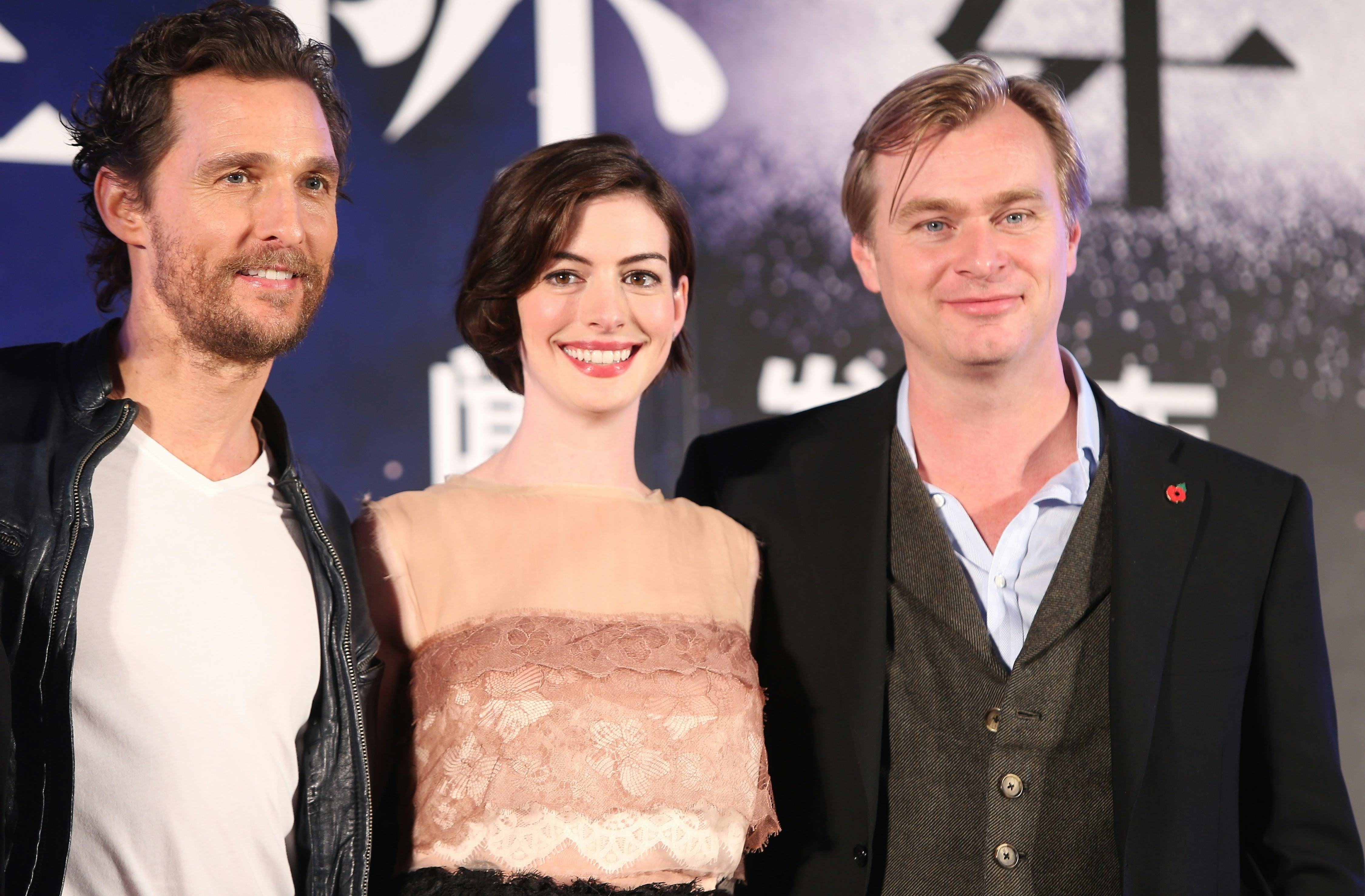
How the film manages to juggle these sometimes disparate ideas is nothing short of a magic trick. Because on top of all of these heady and emotionally charged concepts, there’s also a thriller/action movie element here too. I’ll never forget seeing this movie for the first time with a packed audience, and everyone gasping when the crew of the Endurance discovers a human survivor from a different mission, and that guy is Matt Damon! At the time, nobody even knew Damon was in the movie! This metafictional twist not only leads to big physical conflict in the film but serves as a nice microcosm for why the movie is so brilliantly layered. Just when you think you’ve pinned down what kind of movie Interstellar really is, something happens that makes you question what you thought was the point.
Interstellar is one of those rare science fiction films that doesn’t seem to really end, but rather just kind of stops. And while that would be annoying, or seem like a cop-out in a lot of other cinematic experiences, the movie earns all of its moments, ranging from the absurd to the tender, in equal measure.






